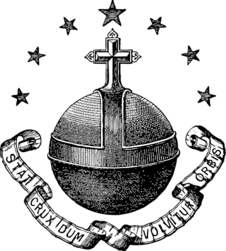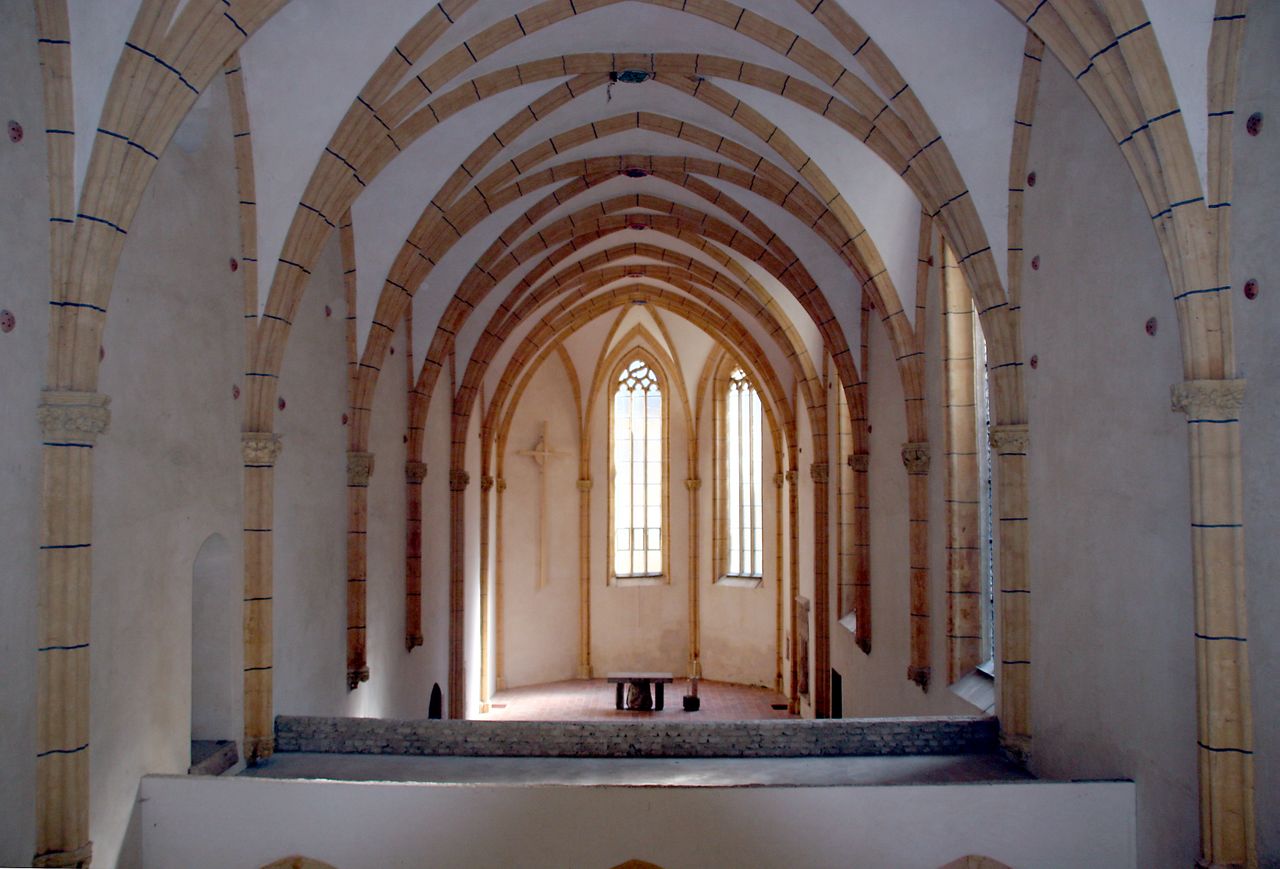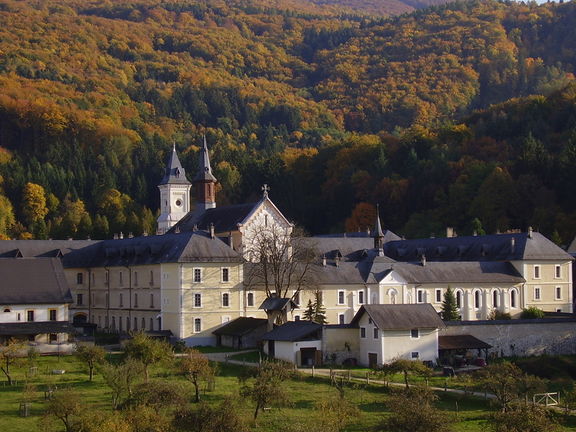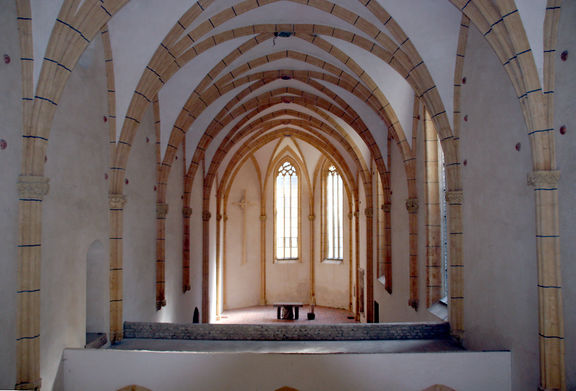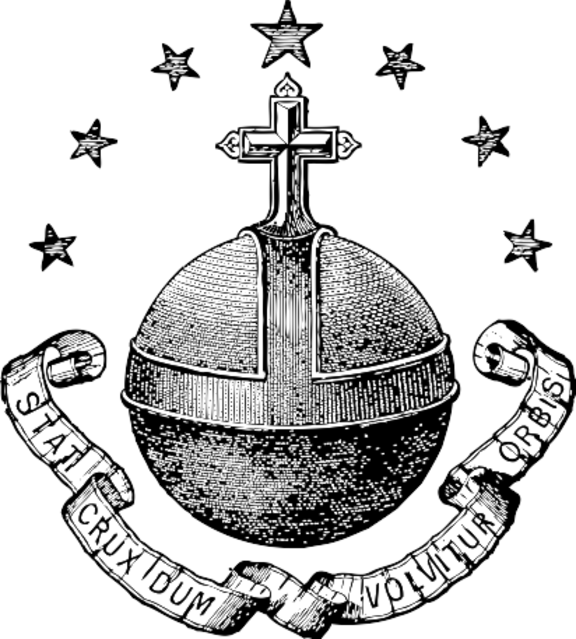Difference between revisions of "Pleterje Charterhouse Monastery"
(imported from XML by extractor/importer) |
|||
| (29 intermediate revisions by 8 users not shown) | |||
| Line 1: | Line 1: | ||
{{Article | {{Article | ||
| − | | status = | + | | status = PHOTO COVER NEEDSUPDATE |
| − | | maintainer = | + | | maintainer = Ivan Pirnat |
}} | }} | ||
{{Infobox | {{Infobox | ||
| name = Pleterje Charterhouse Monastery | | name = Pleterje Charterhouse Monastery | ||
| localname = Samostan Pleterje | | localname = Samostan Pleterje | ||
| + | | logo = Pleterje Charterhouse Monastery (logo).svg | ||
| street = Drča 1 | | street = Drča 1 | ||
| town = SI-8310 Šentjernej | | town = SI-8310 Šentjernej | ||
| − | | telephone = | + | | telephone = |
| fax = 386 (0) 7 308 1219 | | fax = 386 (0) 7 308 1219 | ||
| − | | email = kartuzija.pleterje@ | + | | email = kartuzija.pleterje@chartreuse.info |
| website = http://www.kartuzija-pleterje.si | | website = http://www.kartuzija-pleterje.si | ||
| + | | map = http://www.openstreetmap.org/?lat=45.8176&lon=15.356&zoom=12&layers=M | ||
| contacts = {{Contact | | contacts = {{Contact | ||
| − | | name = | + | | name = Jože Simončič |
| − | | role = | + | | role = Contact Person |
| − | | email = | + | | email = |
}} | }} | ||
}} | }} | ||
| − | {{ | + | {{Teaser| |
| − | + | ||
| + | {{wide Image|Pleterje Charterhouse - 02.JPG}} | ||
| + | |||
| + | [[Pleterje Charterhouse Monastery]] is the only still-inhabited Carthusian monastery in Slovenia. Known officially in Latin as ''Thronus Sanctissimae Trinitatis'', a community of white monks of the strictest contemplative order in the Roman Catholic church are living secluded, behind walls in silence, work and prayer. The monastery has two parts, a ''Clausura'' where only monks, apprentices and lay monastery help are allowed, and a public part with the Gothic church of St. Trinity, built in 1407 in a simple style, but with a so-called "long choir", big Gothic windows, a fish bladder, and ''quatrefoil'' ornament and Parlerian elements in the interior as console masks and flower keystones. In the middle of the nave stands a Rood screen that used to divide lay monks from choir monks and in the walls, clay vessels have been built to give the space a special resonance for choirs. From the Gothic-style buildings only the church, part of the cloister and sacristy have remained, the monastery's other buildings were erected in the beginning of the 20th century. | ||
}} | }} | ||
| − | + | ==History== | |
| + | Pleterje is the youngest of the four Slovene Carthusian monasteries (the other three were Žiče, founded in 1160; Jurklošter, founded in 1170; and [[Bistra Carthusian Monastery|Bistra]], founded in 1255) and was founded by Count Herman II of Celje in [[established::1403]] in a remote valley next to the village Šentjernej under the Gorjanci hills. It was founded on the place where the Sicherstein Castle stood in the 10th century. Troubles for the monastery and the Carthusian monks started early already in 1456 with the death of Ulrik, the last Count of Celje. With no defence, the monastery was damaged several times during the sieges of the Turks in the 15th century. Because of spiritual decay and poor funding, the Archduke Ferdinand II handed over the monastery to the order of Jesuits (Ljubljana), which renovated and fortified monastery. They remained in charge of Pleterje Monastery from 1595 to 1773. During state reforms in the end of the 18th century and the suppression of the Jesuit order, the Austro-Hungarian Emperor and Enlightenment despot Franz Joseph II closed the monastery by decree due to operating and maintenance costs. It was left to ruin, the estates were bought by the barons Bors of Borsod. In 1899, Carthusian monks who had been exiled from Bosserville near Nancy by liberals repurchased Pleterje monastery and renovated it, thus, reviving the order in the region of Slovenia. The founding charter and documents of Pleterje history are preserved in the [[Archives of the Republic of Slovenia]]. | ||
| − | The | + | ==Products and collections== |
| + | The Carthusian monks brought many farming innovations to Šentjernej and are traditionally known for their excellent fruit produce, wines, brandy and bee products. Brand names such as ''Pleterski sadjevec'' (fruit brandy), ''Pleterska viljamovka'' (William Pear brandy), ''Cviček'' wine and ''Medica'' honey liqueur. | ||
| − | + | The monastery incorporates a rich library. A collection of some 44 oil paintings from the 17th and 18th centuries, which are attributed to the Flemish, French, Italian and German Masters, is exhibited in the [[Božidar Jakac Art Museum, Kostanjevica na Krki|Božidar Jakac Art Museum in Kostanjevica]]. Adjacent to the monastery is an [[Pleterje Charterhouse Open Air Museum|open-air museum]]. | |
| − | + | == See also == | |
| + | * [[Pleterje Charterhouse Open Air Museum]] | ||
| + | * [[Bistra Carthusian Monastery]] | ||
| − | + | {{gallery}} | |
| − | |||
| + | == External links == | ||
| + | * [http://www.kartuzija-pleterje.si/ Carthusian Monastery Pleterje website] (Multilingual) | ||
| + | * [http://www.slovenia-heritage.net/pleterje/enova-kartuzija.htm Pleterje Carthusian Monastery on Heritage Trails of Slovenia website] | ||
| + | * [http://kraji.eu/slovenija/kartuzijanski_samostan_pleterje/IMG_9005_kartuzijanski_samostan_pleterje/eng Monastery Pleterje on Kraji.eu website] | ||
| + | * [http://en.wikipedia.org/wiki/Pleterje_Charterhouse Pleterje Charterhouse on Wikipedia] | ||
| + | * [http://en.wikipedia.org/wiki/Carthusian Carthusian order on Wikipedia] | ||
| + | Other charterhouses in Slovenia | ||
| + | * [http://www.burger.si/Bistra/BistraENG.html Bistra monastery and Technical Museum of Slovenia] on [[Virtual Guide to Slovene Museums and Galleries]] | ||
| + | * [http://kraji.eu/slovenija/zicka_kartuzija_zunanji_del/IMG_3509_zicka_kartuzija_potok/eng Žiče Charterhouse on Kraji.eu website] | ||
| + | * [http://www.burger.si/ZickaKartuzija/uvod_ENG.html Žiče Charterhouse] on [[Virtual Guide to Slovene Museums and Galleries]] | ||
| + | * [http://www.gradovi.net/show.php?id=11 Jurklošter Charterhouse] on [[Castles of Slovenia - gradovi.net]] | ||
[[Category:Monuments and sites]] | [[Category:Monuments and sites]] | ||
| + | [[Category:Monasteries]] | ||
| + | [[Category:Churches]] | ||
Latest revision as of 17:37, 9 November 2020
History
Pleterje is the youngest of the four Slovene Carthusian monasteries (the other three were Žiče, founded in 1160; Jurklošter, founded in 1170; and Bistra, founded in 1255) and was founded by Count Herman II of Celje in 1403 in a remote valley next to the village Šentjernej under the Gorjanci hills. It was founded on the place where the Sicherstein Castle stood in the 10th century. Troubles for the monastery and the Carthusian monks started early already in 1456 with the death of Ulrik, the last Count of Celje. With no defence, the monastery was damaged several times during the sieges of the Turks in the 15th century. Because of spiritual decay and poor funding, the Archduke Ferdinand II handed over the monastery to the order of Jesuits (Ljubljana), which renovated and fortified monastery. They remained in charge of Pleterje Monastery from 1595 to 1773. During state reforms in the end of the 18th century and the suppression of the Jesuit order, the Austro-Hungarian Emperor and Enlightenment despot Franz Joseph II closed the monastery by decree due to operating and maintenance costs. It was left to ruin, the estates were bought by the barons Bors of Borsod. In 1899, Carthusian monks who had been exiled from Bosserville near Nancy by liberals repurchased Pleterje monastery and renovated it, thus, reviving the order in the region of Slovenia. The founding charter and documents of Pleterje history are preserved in the Archives of the Republic of Slovenia.
Products and collections
The Carthusian monks brought many farming innovations to Šentjernej and are traditionally known for their excellent fruit produce, wines, brandy and bee products. Brand names such as Pleterski sadjevec (fruit brandy), Pleterska viljamovka (William Pear brandy), Cviček wine and Medica honey liqueur.
The monastery incorporates a rich library. A collection of some 44 oil paintings from the 17th and 18th centuries, which are attributed to the Flemish, French, Italian and German Masters, is exhibited in the Božidar Jakac Art Museum in Kostanjevica. Adjacent to the monastery is an open-air museum.
See also
Gallery
External links
- Carthusian Monastery Pleterje website (Multilingual)
- Pleterje Carthusian Monastery on Heritage Trails of Slovenia website
- Monastery Pleterje on Kraji.eu website
- Pleterje Charterhouse on Wikipedia
- Carthusian order on Wikipedia
Other charterhouses in Slovenia



